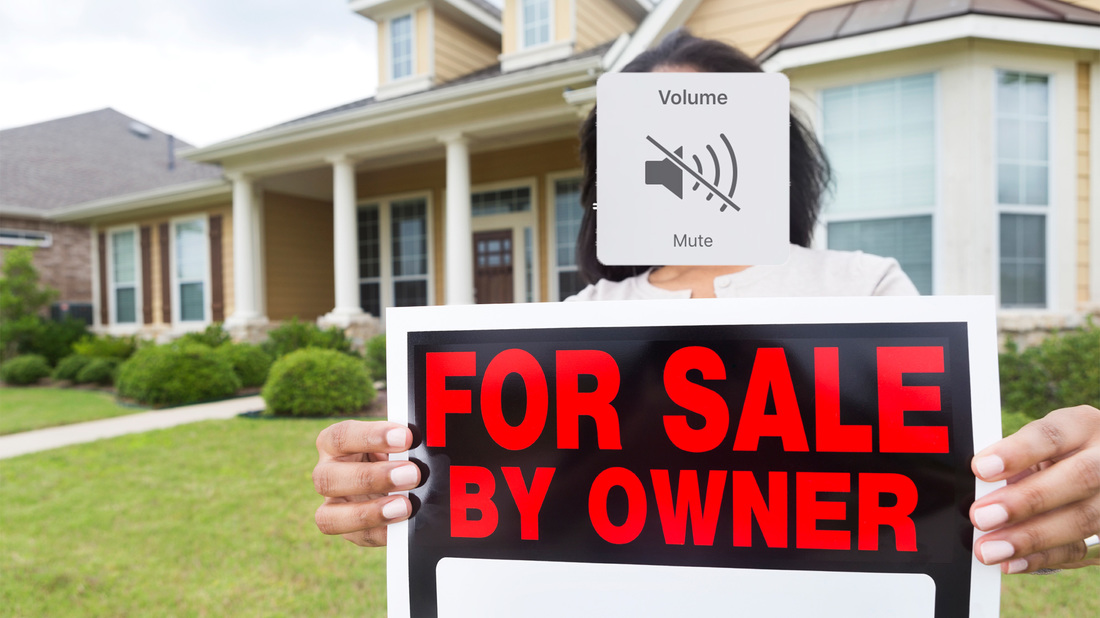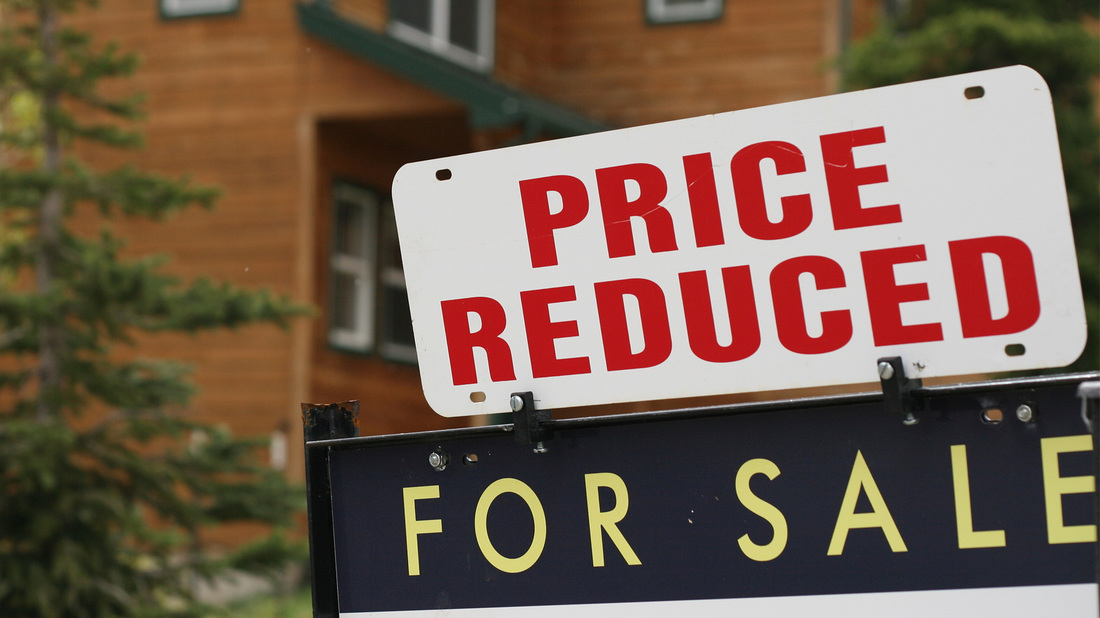|
Consider your salary as a starting point Getting a ballpark estimate of how much home you can afford boils down to how much money you’re pulling in. “The general rule of thumb is that you can purchase a home that costs two or three times your annual salary,” says Harrine Freeman, a financial expert and the owner of H.E. Freeman Enterprises. So if you’re making $80,000 per year (and you have a reasonable amount of job security), that means you can afford a house up to three times that, or $240,000. That said, “this is only an estimate and does not account for your monthly bills,” says Freeman. So let’s dive into more specifics. Follow the 28/36 rule If you’re overwhelmed by numbers, budgets, and big-ticket decisions, follow the 28/36 rule, a simple but effective guide for affordability. The “28″ refers to your monthly housing payments—things such as mortgage, insurance, and taxes—which shouldn’t be more than 28% of your gross monthly income (ideally it should be less). This is easy to calculate, because all you need to do is multiply. For example, if your gross (meaning before taxes are taken out) monthly income is $6,000, multiply that by 28% (or 0.28) and that means you shouldn’t pay more than $1,680 on your home. The “36″ refers to your debt-to-income ratio, which compares how much money you owe (to credit cards, colleges, car loans, and—hopefully soon—a home loan) to your income. This ratio should be “no more than 36%,” says Freeman; ideally, it should be much less. Think about it in terms of your monthly expenses: If you make $6,000 per month but spend $500 paying off debts, you divide $500 by $6,000 to get a debt-to-income ratio of 8.3%. This is great, but adding $1,680 per month in mortgage payments would push up your monthly debt load to $2,180 and your debt-to-income ratio to 36%. This is exactly the maximum experts say you can afford. Going past this threshold is a risky move. Once you know both these numbers, as well as how much of a down payment you plan to contribute, you can easily work out the maximum monthly mortgage payment you can afford—and by extension, the priciest house you should buy. According torealtor.com®‘s Home Affordability Calculator, if you make $6,000 a month, pay $500 in debts (pre-house), and can make a down payment of $40,000, if you get a 30-year fixed mortgage at 4% interest you can afford a house worth $277,800. Plug in your own numbers and see what happens! Consider your dreams and the alternativesOnce you’ve determined how much you can spend, you can start weighing what you absolutely must have in your home—and what you’re willing to sacrifice if necessary. Use the “pick 2″ rule: price, quality, location. Typically you can prioritize two of those categories, but not all three. Your best bet is to stick to an amazing neighborhood for an amazing low price, and know that your home might not have that pool, wine cellar, or other amenities you’d hoped for. These trade-offs are just the reality of house hunting, so don’t be disheartened. Consider widening your search to different neighborhoods or knocking a few items off your must-have list until you find the location and amenities that best fit your budget. Weigh what really matters for your dream home, then start performing preliminary searches online using sites such as realtor.com. And try to stay optimistic—with enough searching and some luck, you could find it all. Once you’ve determined what kind of house you’re looking for, it’s time to put your feet to the pavement and start checking out the market in person. To do that, you’ll need a Realtor®. Not sure where to find one? Tune in for our next entry in this series. Source: realtor.com
http://www.realtor.com/advice/buy/house-you-can-afford/
0 Comments
Spencer Rascoff, chief executive officer at Zillow, explains changes to the home buying market and looks at any lingering effects from the financial crisis. He speaks on "Bloomberg Surveillance.  Getting your dream home at the best possible price sometimes feels like it only belongs in your dreams. However, with enough home-buying savvy, anyone can acquire the property they want without blowing up their bank account or taking on too much mortgage debt. Buy Sooner Sure, haste makes waste, and all those other proverbs that teach us to be more patient and plan everything with precision. However, once you get all the ingredients properly mixed together, you'd want to move as quickly as you can to finalize the purchase. Housing interest rates are expected to rise consistently over the next several years alongside the actual price of housing, according to experts. Starting sooner may save you from these upcoming market changes. Hire a Good Property Agent Many home-buyers hire the first property agent they meet. This is a big mistake that will likely bite you later throughout the process. Meet with several property agents first who are well-established in your vicinity. Know which markets they are experienced and skilled in. For instance, if you are looking for a basic, single-family bungalow, it won't make sense to work with a property agent who's main focus is luxury properties. Use the Web Looking for property agents and property listings online can cut your resources spent in half. You'll be able to build a large database of potential properties and property agents much faster without even having to leave the house and spend money on gas. For example, you can find your dream home in Mercer County with Gloria Nilson's free listings. Using the web can offer many different benefits when looking for a house. Negotiate with Sellers Directly If you don't have much negotiating experience, now's the time to hone your skills. Negotiate with sellers in-person, so that they know you mean business and isn't one to take "No" for an answer. Viewing property listings online, you may find information of whether or not the seller is prepared to cut the final price under specific terms and conditions. For instance, some sellers may be willing to negotiate a cheaper price if you agree to buy in cash or before a certain date. Don't Be in a Hurry Patience pays off in the game of home-buying. If you have more time than the other party, you will likely win the terms in which the property is transacted. Of course, don't forget to be flexible as well. If it's only a minute dollar difference in what he/she is asking for and what you are offering, it's not worth it to delay the sale. Use these five tips to get your dream home at an affordable price and without the common hassles and stress of property transactions. It won't be a complete home run, but adopting these 5 tips does streamline the process. Source: Realtytimes
http://anica.realtytimes.com/advicefromtheexpert1/item/41725-five-tips-for-getting-your-dream-home-at-a-great-price hether you are buying or selling a home, it can be quite an adventurous journey. You need an experienced Real Estate Professional to lead you to your ultimate goal. In this world of instant gratification and internet searches, many sellers think that they can For Sale by Owner or FSBO. The 5 Reasons You NEED a Real Estate Professional in your corner haven’t changed, but have rather been strengthened due to the projections of higher mortgage interest rates & home prices as the market continues to recover. 1. What do you do with all this paperwork? Each state has different regulations regarding the contracts required for a successful sale, and these regulations are constantly changing. A true Real Estate Professional is an expert in their market and can guide you through the stacks of paperwork necessary to make your dream a reality. 2. Ok, so you found your dream house, now what? According to the Orlando Regional REALTOR Association, there are over 230 possible actions that need to take place during every successful real estate transaction. Don’t you want someone who has been there before, who knows what these actions are to make sure that you acquire your dream. 3. Are you a good negotiator? So maybe you’re not convinced that you need an agent to sell your home. However, after looking at the list of parties that you need to be prepared to negotiate with, you’ll realize the value in selecting a Real Estate Professional. From the buyer (who wants the best deal possible), to the home inspection companies, to the appraiser, there are at least 11 different people that you will have to be knowledgeable with and answer to, during the process. 4. What is the home you’re buying/selling really worth? It is important for your home to be priced correctly from the start to attract the right buyers and shorten the time that it’s on the market. You need someone who is not emotionally connected to your home to give you the truth as to your home’s value. According to the National Association of REALTORS, “the typical FSBO home sold for $210,000 compared to $245,000 among agent-assisted home sales.” Get the most out of your transaction by hiring a professional. 5. Do you know what’s really going on in the market? There is so much information out there on the news and the internet about home sales, prices, mortgage rates; how do you know what’s going on specifically in your area? Who do you turn to in order to competitively price your home correctly at the beginning of the selling process? How do you know what to offer on your dream home without paying too much, or offending the seller with a low-ball offer? Dave Ramsey, the financial guru advises: “When getting help with money, whether it’s insurance, real estate or investments, you should always look for someone with the heart of a teacher, not the heart of a salesman.” Hiring an agent who has their finger on the pulse of the market will make your buying/selling experience an educated one. You need someone who is going to tell you the truth, not just what they think you want to hear. Bottom Line You wouldn’t replace the engine in your car without a trusted mechanic. Why would you make one of your most important financial decisions of your life without hiring a Real Estate Professional? Source: Keepingcurrentmatters
http://www.keepingcurrentmatters.com/2016/01/18/thinking-of-buying-selling-5-reasons-you-need-to-hire-a-professsional/ You packed everything perfectly, including that dining room chandelier, the big-screen TV, the vintage ’70s “Dukes of Hazzard” T-shirt collection. You even got your dog’s medical records from the vet. But something’s keeping you awake at night as your move draws nigh. You know you forgot something. Don’t worry, keep packing. We assembled this handy checklist of things people often forget to do—or don’t even realize they should take care of—so you can make sure you’re covered and can move and settle down in your new digs with ease. 1 month before: Cancel recurring charges Taking care of a gym membership or other subscription services may fall by the wayside during the madness leading up to moving day. Worse, those recurring charges will keep mounting on your credit card while you’re in the throes of unpacking. Get a jump on canceling these at least a month before your last expected day of use, especially since many gyms require a 30-day notice. Can’t get out of your contract or transfer your gym membership to a facility by your new home? Sell it through online classifieds such as GymTransfer (yes, most gyms allow this!). Don’t forget to unload any prepaid class cards, too. On the flip side, important recurring charges on your credit card—such as mail-order medications—might be canceled if your address change hasn’t caught up with billing information. So compile a list of charges and make the effort to call these companies and give them a heads up to avoid disruption in service. 2 weeks before: Call your car insurance company The Department of Motor Vehicles advises people in the process of moving to closely manage their car insurance during the transition, as states have varying levels of required coverage. Even if you’re staying in the same city, rates can differ from neighborhood to neighborhood. So call your insurer well before the move to find out the parameters and deadlines for updating coverage at your new address. 2 weeks before: Change your address early Most people know the U.S. Postal Service offers an online form to quickly change an address for all of your mail, but that doesn’t mean you should wait until the last minute to fill it out. “To make sure mail arrives at your new home in time for your life there, complete the form about two weeks before your move,” says Desmond Lim, founder of QuikForce, an on-demand website that links people with professional movers. That way “you should see the first of your forwarded mail by the time of move-in.” 1 week before: Organize your finances Important financial tasks are often forgotten in the whirlwind of moving, says consumer finance expert Kevin Gallegos, vice president of Phoenix operations for Freedom Financial Network. Since losing track of bills among piles of boxes is all too easy, Gallegos recommends setting up systems before a move that can easily transition from old home to new. For monthly bills such as phone, rent, or mortgage, it can really help to set them up for autopay, which you can typically do through your bank or the billing company. “This can help ensure on-time payment during a hectic time,” he says. Whatever system you choose, decide which household member will be responsible for paying which bills. And as moving often incurs unexpected costs, be sure that you’ll have enough money in designated accounts at time of payment. 1 day before: Snap pictures of your electronics Those cables in the back of your TV and modem that keep your life wired? They don’t make sense now and will make even less sense when they are tangled in a box. A simple solution is to snap a picture of the setup before you take your electronics apart—and coil the cords and label them with masking tape, for good measure. 1 day before: Pack your plants Do you have a special plant (maybe that hydrangea you planted for your child’s birth or your mom’s prized azaleas)? To make sure you aren’t forced to leave it behind in your rush, make a list of what plants you want to take with you and put a plant plan in place. Don’t put your shovels into the moving van until the last minute—you’ll need them to carefully dig up root balls. Buy large buckets beforehand and use them to transport each plant. Source: Realtor.com
http://www.realtor.com/advice/move/things-to-do-before-moving-out/ Set up a no-fail garage system A place for everything, and everything in its place (or at least you’ll be able to tell if it’s not). I suggest starting out in the garage, because it can be one of the most overcrowded places in the house. Picture yourself driving into your garage and seeing at least one new system set up for easy use in the coming year. Here’s an approach that’s simple, inexpensive, and quick to accomplish. Hang some peg board Put some tool hooks in the holes on the board Using a thick marker, draw an outline around each tool to reserve its location. Your new tool organizing system will keep you organized, and alert you when tools are missing. This garage system also helps other family members put things away because it’s easy to see where to place each item. Make a grand entrance Whether you enter through the garage or via a front or back door, it feels so good to be home. This is usually the last stop of a long string of errands or a full day’s work. Our tendency is to enter the home and drop our mail, dry cleaning, backpacks, and more. But this passageway is also the send-off point each morning before we leave. Being organized when exiting the house can make or break your day. Hanging a pocketed hanger on the door knob or over the back of the door provides a spot to hold items you will need for running errands, or for your work or school day. This gives you easy access to items such as outgoing mail, lunch money, keys, and receipts for purchases you need to return. Each morning, those important items are ready and waiting for you. Cut laundry time in half How can one of the smallest rooms in the house seem so chaotic? And why does doing laundry seem to take up so much time? Here’s a laundry system that will save you time and restore your sanity. First, provide everyone with their own laundry basket. Put family members’ names on the sides of the baskets so there are no lost items or mix-ups. Now here’s the sweet secret. When the wash is done, rather than placing the clean laundry on the dining room table or the stairs (and watching everyone walk by without picking up their clothes), have everyone come to the laundry room to pick up their personalized basket of clean clothing. Work some kitchen magic The kitchen is the activity hub of most homes. It’s a busy area because family members or roommates use the kitchen at least three to five times a day. We open our mail here, study for school, use our laptops and tablets here — not to mention, it’s where the food is. A lunch-making station helps streamline morning routines. Because we have so many varied activities happening in the kitchen, it’s wise to create separate stations for those activities. One way to accomplish this is to invest in a rolling cart — whatever style and size works best in your kitchen. Use this cart to establish a dedicated space for one of your most common activities. For example, create a lunch-making station stocked with a cutting board and knife, salt and pepper, paper towels, wraps, and baggies. Create the space for your family to assist in making your life easier while also keeping one station of like-items together. Put it in writing Whether you’re a one-person household or a family of five, one tool can save your life or home: a household manual. The beauty of this handy tool is it doesn’t have to be compiled all at one time, and it costs you nothing to create. Grab a three-ring binder and a three-hole punch, and keep your essential information in the binder. To get started, collect your emergency contact info and other vital information such as the name of your vet, school rosters, alarm codes, medication doses for your kids, the name of your father’s caregiver, and where your home’s gas shut-off valve is located. As you continue to organize your home and find more essential documents, you can add to the binder. For those who prefer a high-tech approach, store your manual on a highly secure cloud service such as Digital LifeCloud. Get a charge Many people are frustrated by cell phones, iPad chargers, memory sticks and tangled cords sprinkled throughout the house. Relaxation and recreation activities often seem to need the power of a charging station that’s easily accessible — and it doesn’t hurt if it’s attractive, too. One simple solution is to consider a charging station that conceals the cords, keeps all the electronic items together, and looks good while doing it. Tell a tidier toy story Whether it’s grandparents or new moms and dads, one of the biggest complaints of people who share their home with children is about picking up toys. The “putting away” task is a skill that can and should be taught to children, as it’s important for establishing personal responsibility in kids as they grow into teens and then adulthood. Besides, putting away toys can be fun. Here’s one idea that will shift your playroom atmosphere from frustration to elation. Use colorful bins to hold toys, designating each bin to hold one type of toy, such as musical instruments, cars, dolls, games, or Legos. To make it even easier, find pictures of the toys in magazines or online, and use them to label the bins. If you have dolls or stuffed animals in one bin, attach the matching picture to the front of the bin. Keep the number of bins small, but make sure the bins are large and easy to access. Declutter the grownups’ bedroom closet Bulging closets and growing piles of clean and dirty laundry may nix the possibility of either rest or romance. Decluttering in the bedroom creates a sanctuary for both. Starting with the closet is good move. Once the space is clear, it all boils down to finding what you need when you need it. Here’s a quick process for getting your closet in order: Clear the floor so you can move around easily. Make sure you have proper lighting. Pull everything out. Only put back in what fits you right now, is stain-free, and requires no repairs. Set kids’ closets straight For organizing kids’ clothes, there’s no better tool than a hanging shelving unit. Designate one pocket for each day of the week, and label it. Each weekend, pick out clothes for the following week, and put them in the pockets for the day your child will wear them. Whether your kids have class pictures or an outdoor field trip, the proper outfit for the day is all set. Imagine a calm morning without clothing conflict. Bundle toiletries and grooming tools Some bathrooms are small, and everyone seems to have their own favorite shampoo, hairbrush, and brand of toothpaste. Drawer, cabinet, and counter space tends to run out quickly. If this is your situation, try assigning everyone in the house a bathroom caddy, loaded up with all their cosmetics, toiletries and grooming tools, and labeled with their name. Store the caddies on a shelf in the bathroom or carry them to and from the bedroom. The bathroom stays organized, and there’s an automatic clean-up built in after every visit. From Zillow.com
From one of our lender partners - Movement Mortgage Fannie Mae Chief Economist Doug Duncan gives his 2016 housing outlook on CNBC's "Closing Bell." In this clip from Jan. 13, 2016, Doug appears alongside "Shark Tank" investor Kevon O'Leary to discuss the housing market. Doug talks about why he thinks in 2016 housing affordability constrains as the economic expansion matures. ‘Our house is in perfect condition’ Your home is your castle, and in your eyes it may seem perfect—but don’t make claims that aren’t true, says Cara Ameer, a Realtor® with Coldwell Banker. “The home inspection may reveal otherwise, and, as a seller, you don’t want to wind up putting your foot in your mouth,” she explains. Bottom line: “There simply is no such thing as ‘perfect condition.’ Every house, whether it is brand new or a resale, has something that needs to be fixed, adjusted, replaced, or improved upon.” ‘It’s been on the market for X…’ Never, ever discuss how long the home has been on the market with prospective buyers, says Pam Santoro, a Realtor with Berkshire Hathaway HomeServices. This info is often listed and available on the home’s information sheet, but bringing it up—especially if the home has been available for eons—can send sellers the wrong message. No one wants to buy a white elephant—and, if they do, it’s probably because they think they’ll be getting it dirt-cheap. ‘We’ve never had a problem with…’ If you’re hoping to move quickly, you may be tempted to tell a few little white lies. So you never had a problem with weird neighbors, eh? Or flooded basements? Or vengeance-seeking poltergeists? Realtors agree that your mistruths—however insignificant they might seem—could come back to you with teeth. “You’re setting yourself up for potential liability,” explains Ameer. “You may not even be aware of the problem at first, but it could translate into an embarrassing moment upon inspection.” So come clean with what you know and admit what you don’t. ‘We always wanted to fix/renovate that, but…’ Tempted to mention, “We always thought about knocking this wall down and opening the space for more light?” How about “We planned on renovating this bathroom but ran out of cash”? Mum’s the word when it comes to fixes you intended to address. Nobody cares about good intentions. “When sellers point out things they might change, this only alerts the buyer of more upcoming costs for them,” says Maryjo Shockley, a Realtor with Keller Williams. Who knows? Your buyers may not even want to knock down that wall or redo the bathroom. So why plant those ideas, along with those dollar signs? ‘We spent a ton of money on X, Y, and Z’ Just because you love the Brazilian koa wood flooring you installed throughout the first floor, that doesn’t mean prospective buyers will be willing to shell out for it. “The buyer doesn’t care whether you spent $10,000 or $100,000 on your kitchen,” says Ameer. “They are only going to offer what they feel the home is worth in relation to area comparable sales.” So, save your breath, or else you’ll risk sounding like you’re trying too hard to justify your price. Desperation isn’t cool. ‘I’m not taking less than X amount for my home’ When it comes time to sell, it makes sense that you want top dollar. We get it! But at the same time, it’s important to be realistic and open to offers within a reasonable range. “If you send a message that you are inflexible or not open to negotiating, it may not invite buyers to even try to work out acceptable price and terms as they will feel defeated from the start,” says Ameer. “Word may spread that you have this sentiment as a seller, and people may start to avoid the house.” From: Realtor.com by Liz Alterman
There it is: your home! Just sitting on the market. It’s been like that for some time now, and it’s starting to look a little … desperate. Last-guy-at-the-bar desperate. You consider reducing the price, but then you might be robbing yourself of thousands of dollars. But if you don’t, you could end up missing out on eager buyers with a slightly lower price point. So when exactly should you cry “uncle” and lower that asking price? We asked some experts for advice. Keep tabs on—and listen to—house hunters Are your open houses turning into a letdown? Are buyers visiting but walking away? “If 35 to 40 buyers have passed through your home and not a single one has placed an offer, it’s time to seriously consider a price improvement,” says New York City real estate agent Brad Malow. Translation: a reduction. As a seller, you should be asking buyers and their brokers for feedback after private viewings. Pay close attention and see if there are any common positives or negatives in their responses, so if a current theme is “It’s a bit expensive,” then you’ll know it’s time to start a price drop. How long has it been? The thing that can cost you the most money is having your home stagnate on the market. So unlike dating, you shouldn’t wait for the perfect suitor to come along. Perfect is a high bar. Houses set at the right price will start getting offers “within the first few weeks,” Malow says. Are comparable houses selling left and right, but you haven’t received an offer? If so, you may want to do more than just lower the price—you might want to delist it for a short while. “Once you’ve been on the market for five weeks or so, you’re chasing the market,” says Mike King, an agent with the Partners Trust Realty in Brentwood, CA. If you haven’t seen any action in a while, it might be time to take your house off the market, do some touch-ups, and relist. King says he sold a house that had languished for six months on the market by removing the listing, having the sellers pull up the shag carpet—something their original seller’s agent didn’t make them do—and staging the place much better. It was relisted and sold within a couple of weeks at asking price. ‘It’s almost impossible to underprice’ a home Here’s something you should consider when debating the great price chop: The market will probably decide it for you anyway. “It’s almost impossible to underprice, because the market will bring it back up,” King says. Think of it like eBay. You list an item for $1, but you know it’s worth somewhere in the $250 range. Eventually people start bidding, and some people might want that item so much they end up paying $275 for it. It’s actually a better move to slightly underprice your home than it is to overprice it, because you’ll have more offers to work with—and you can work the competition into a frenzy. “It’s called leveraging power,” King says. “If I’m a [motivated] buyer and I know there’s only three offers, I’m going be less aggressive than if you had 10 offers.” The golden rule: Know thy market Above all else, you need to consider your market. There’s no universal timeline that will tell you when to reduce your price. But Malow says to consider these three key points: How are comparable properties faring in the market? Are they selling quickly or lingering on the market? If they’ve closed, what was their closing price? What is the average time a home stays on the market in your neighborhood? If you haven’t reached that point, don’t reduce it just yet. Likewise, if you’re well past your hood’s “sell-by date,” it’s time to start cutting prices and maybe even delisting your home. How many homes had a price reduction in your neighborhood, and how long did it take for the price cut? Did it help them sell? Again, what was the sale price? In other words, do your homework and work with the market—don’t fight it. Source: Realtor.com
http://www.realtor.com/advice/sell/how-long-should-you-wait-before-lowering-your-asking-price/ |
Tress RealtyTress Realty Group compiles some of the best real estate news, tips, and information for buyers, sellers and investors. Archives
April 2020
Categories
All
|
Home
Use of the information and data contained within this site or these pages is at your sole risk. If you rely on the information on this site you are responsible for ensuring by independent verification its accuracy, currency or completeness. It is provided “as is” without express or implied warranty.
Some properties which appear on this web-site may no longer be available because they are under contract, have been sold or are no longer being offered for sale. Images uses for navigation may be for properties in different towns, and are not intended to be considered anything other than representative of the types of houses that may be found in a particular municipality. All data and/or search facilities on this site are for consumer's personal, non-commercial use and may not be used for any purpose other than to identify prospective properties that consumers may be interested in purchasing.
Tress Realty Group cannot guarantee the accuracy of the IDX/MLS data created by outside parties. Tress Realty Group further assumes no responsibility for any misleading content or incorrectly listed information due to such negligence. All ancillary information presented on this web-site is not guaranteed and should be independently verified by the users of this site. Tress Realty Group makes no warranty, either expressed or implied, as to the accuracy of the data contained within or obtained from this web-site.
Tress Realty Group accepts no liability for any interference with or damage to a user’s computer, software or data occurring in connection with or relating to this Site or its use or any website linked to this site. Further, Tress Realty Group has provided Hypertext links to a number of sites as a service only. This should NOT be taken as implying any link between us and those various organizations or individuals.
Disclaimer: this website may be supported by ads and participation in affiliate programs. We may earn a commission when you click our links. The information included in this post is for informational purposes only and should not be taken as legal or financial advice.
Site copyrighted by Tress Realty Group LLC © 2016-2022, all rights reserved.








 RSS Feed
RSS Feed